Tags
Hôtel-Dieu de Montréal, Jeanne Mance, Marguerite Bourgeoys, Montreal, New France, Notre-Dame, Pierre Elliott Trudeau, Quebec, Riot 1968, Saint-Jean-Baptiste riot

Letter from Louis XIV to Montrealers (Photo credit: Wikipedia)
During the weekend, I attended a dinner in Montreal. The men wore tuxedos and the ladies, one of the fine gowns Donkeyskin asked her father to give her. I was surrounded by multilingual and multicultural individuals of every race. The men wore tuxedos and the ladies, one of the fine gowns Donkeyskin asked her father to give her. I was surrounded by multilingual and multicultural individuals of every race. Everyone was on an equal footing. So this was the Montreal I like.
I remarked to the gentleman sitting across from me, a lawyer, that it had saddened me to learn that investors had taken 50% of their money out of Quebec after the election of Madame Pauline Marois to the Premiership of Province of Quebec. This lawyer is a bilingual Québécois. He told me there was more and then mentioned 1977, the year after Parti Québécois leader, charismatic René Lévesque, was elected into office. After his election, on 15 November 1976, there was an exodus. We then moved on to another subject.
Rue Saint-Dominique, 1866 (Photo credit: Wikipedia)
However, after I returned home, I remembered Saint Francis Xavier University (StFX) once again. This time, I was not thinking about Dr Cecil MacLean. In my thoughts were the sisters of the Congrégation de Notre-Dame (the CNDs) who owned a convent and a residence for female students on the campus of StFX. I had just been in Montreal where Marguerite Bourgeoys (17 April 1620 – 12 January 1700) founded the Congrégation de Notre-Dame. In this respect, you may remember that many of the filles du roy were taught to cook and to sew by members of the fledgling Congrégation. Several filles du roy had not been taught skills that would be required of the young women who would marry settlers to New France and raise large families.
Losses
Losing their residence for women must have been devastating to my colleagues who were members of the Congrégation de Notre-Dame, but imagine their also losing their convent. Who would help them? The order had suffered losses during the Quiet Revolution, or Révolution tranquille, so to what extent could they be helped by their weakened Quebec motherhouse. Until the 1960s, convents run by the Congrégation de Notre-Dame (CND) and other religious orders had flourished in Quebec, but during the Révolution tranquille, the Quebec government laicized education and healthcare, which dealt a blow to Catholic institutions.
(Please click on the image to enlarge it. Photo credit: Wikipedia)
Historical Montreal
When Paul de Chomedey, Sieur de Maisonneuve (15 February 1612 – 9 September 1676), a French soldier born in Champagne, founded Montreal (Hochelaga), on 17 May 1642, he did so on behalf of the Société Notre-Dame de Montréal, an organization founded in Paris by Jérôme le Royer de la Dauversière, a Jesuit.
In 1608, Samuel de Champlain had founded Quebec-city (Stadacona) as both a mission and a fur-trading post. Montreal, however, was founded as a mission, Ville-Marie, and in 1663 the whole island was conceded as a seigniory to the Messieurs de Saint-Sulpice FR,[i] a society of Catholic priests founded in Paris in 1639. Montreal did become a fur-trading post, but it was first and foremost a mission and, inextricably associated to its founding, are Jeanne Mance (12 November 1606 – 18 June 1673) and Marguerite Bourgeoys (17 April 1620 – 12 January 1700). Jeanne Mance was Nouvelle-France’s first nurse. She established l’Hôtel-Dieu de Montréal in 1645. Marguerite Bourgeoys, canonized by John Paul II on 17 October 1982, was Montreal’s first teacher and, as noted above, she founded the Congrégation de Notre-Dame in 1658.
The Quiet Revolution
A separation of Church and State was inevitable, but the work of the Dames de la Congrégation was linked with the founding of Montreal, not to mention both the preservation and growth of the French language in Quebec and the rest of Canada. Quebec may have been a “priest-ridden” province, but without its various religious orders and, among them, the Dames de la Congrégation, one wonders whether or not there would have been a Quebec to “reform.” As indicated in the Canadian Encyclopedia, “[u]nder Jean Lesage the Québec Liberal Party had developed a coherent, wide-ranging reform platform. The main issue of the election was indicated by the Liberal slogan, “It’s time for a change.” I wonder, however, whether Premier Jean Lesage (10 June 1912 – 12 December 1980) realized that, in the case of Quebec, the line between Church and State was so very blurred that his “coherent, wide-ranging reform platform” could broaden to include an ideology that rivalled religion: sovereignty or separatism, as it was then called.
The Church in Quebec
As I wrote above although the separation of Church and State was unavoidable, Quebec’s ancien régime, metaphorically speaking, had been the Seigneurial system which was replaced by what could be called the Parochial system (my term). Quebec had parishes and, when cities started to sprout, they were a collection of parishes each of which had its schools, one for girls and one for boys, etc. Therefore, how would religious orders be replaced? There was too profound a gap to fill.
I am told that the formerly “priest-ridden” province is now a union-ridden province, which could be the case. I should think, however, that the dream of a sovereign province may also have helped replace the Parochial system. History has yet to render its verdict, but the Révolution tranquille may well have supplied ample room to French-speaking Quebecers who had wanted an independent Quebec since the Act of Union was promulgated, in 1841. That year the patriotes lost their Lower Canada which they believed was truly theirs. At any rate, the changes were more extensive than Premier Lesage had foreseen. There had long been nationalists among Québécois but, as of the 1960s, these nationalists were active separatists and among them there were terrorists. Therefore, it may be that sovereignty or separatism filled the profound gap I mentioned.
24 June 1968
The gentleman I escorted to Saturday’s elegant dinner told me that, on 24 June 1968, he was standing a few feet away from Pierre Bourgault (23 January 1934 – 16 June 2003), a leading séparatiste. June 24th is Quebec’s national holiday: the Saint-Jean-Baptiste. When the yearly parade reached parc La Fontaine, in Montreal, my friend personally saw a group of hooligans join Pierre Bourgault who started the riot by screaming “le Québec aux Québécois,” “le Québec aux Québécois,” (Quebec for Quebecers). The hooligans, he said, first lifted a police car and put it on its head. There were 292 arrests and 123 persons were injured, 43 of whom were members of the police force. Some of the police horses were also injured. Pierre Elliott Trudeau (18 October 1919 – 28 September 2000), the Prime Minister of Canada, was in attendance and refused to be taken away to safety.
It’s been 45 years. Although Pierre Bourgault later revealed his role in the riot, he was never charged for the criminal behaviour I just described. Rioters may have been targeting Pierre Trudeau, but the 1968 riot was, so to speak, self-inflicted terrorism, which is puzzling. Moreover, when bombs were placed in mailboxes, these could cause injury to anyone, including Québécois and, perhaps, separatists. I then remembered the 1970 October Crisis. On 5 October 1970, Quebec terrorists abducted James Cross, CMG, but the person they assassinated was Pierre Laporte (25 February 1921 – 17 October 1970), Quebec’s very own Labour Minister. Given the above, it could well be that separatism, later called souveraineté-association and souveraineté, did replace the Church, not altogether, but to a greater or lesser extent. Only crusaders are capable of such intensity and somewhat incomprehensible behaviour.
Let’s say that matters got “curiouser and curiouser” (Alice in Wonderland).
(Please click on the photographs to enlarge them.)
Parc La Fontaine Rue du Parc-La-Fontaine Google ImagesConclusion
And now, Quebec is losing investors. Matters were worse in 1977, just after René Lévesque (24 August 1922 – 1 November 1987), was elected to the Premiership of Quebec. But, financially, Quebecers are nevertheless suffering, which they may not realize. Yet, Canada is an officially bilingual country where the rights of French-speaking Canadians are respected.
As for my colleagues who were losing their residence and convent, that loss reflects, first and foremost, the needs of a new generation of students. More modern residences had been built. However, I believe my colleague’s losses are also linked to the weakening of religious orders in Quebec. The Congrégation de Notre-Dame is a Montreal religious order. Quebec remembers its founders, but the Church is no longer the powerful institution it had been since the seventeenth century.
_________________________
I am providing links to French-language videos showing the 24 June 1968 Saint-Jean-Baptiste day riot. It seems these cannot be embedded. But I am also inserting a little video showing patriotes being taken to the gallows. The music is “À la claire fontaine,” perhaps the most Québécois of Québécois songs: an unofficial anthem.
Émeute lors de la Saint-Jean-Baptiste à… par CioranQc

Patriotes à Beauharnois en novembre 1838 par Katherine Jane Ellice (aquarelle) (Archives nationales du Canada)


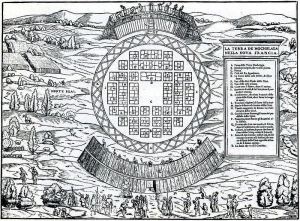
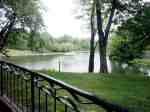






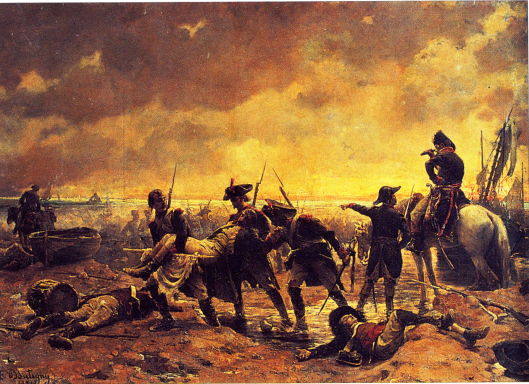



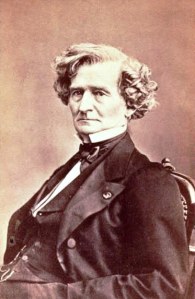





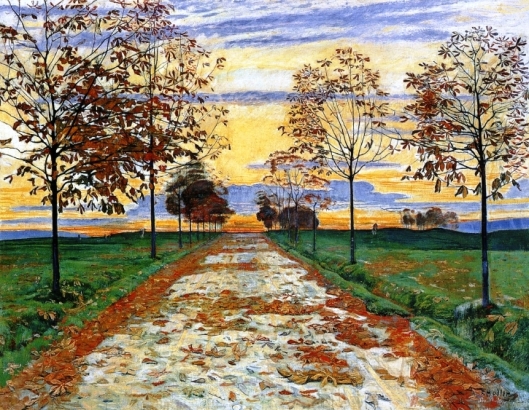

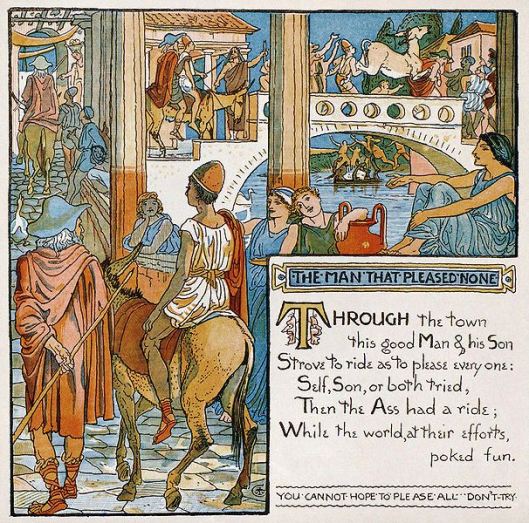












![le-chat-et-le-renard[1]](https://michelinewalker.files.wordpress.com/2013/05/le-chat-et-le-renard1.png?w=529)


